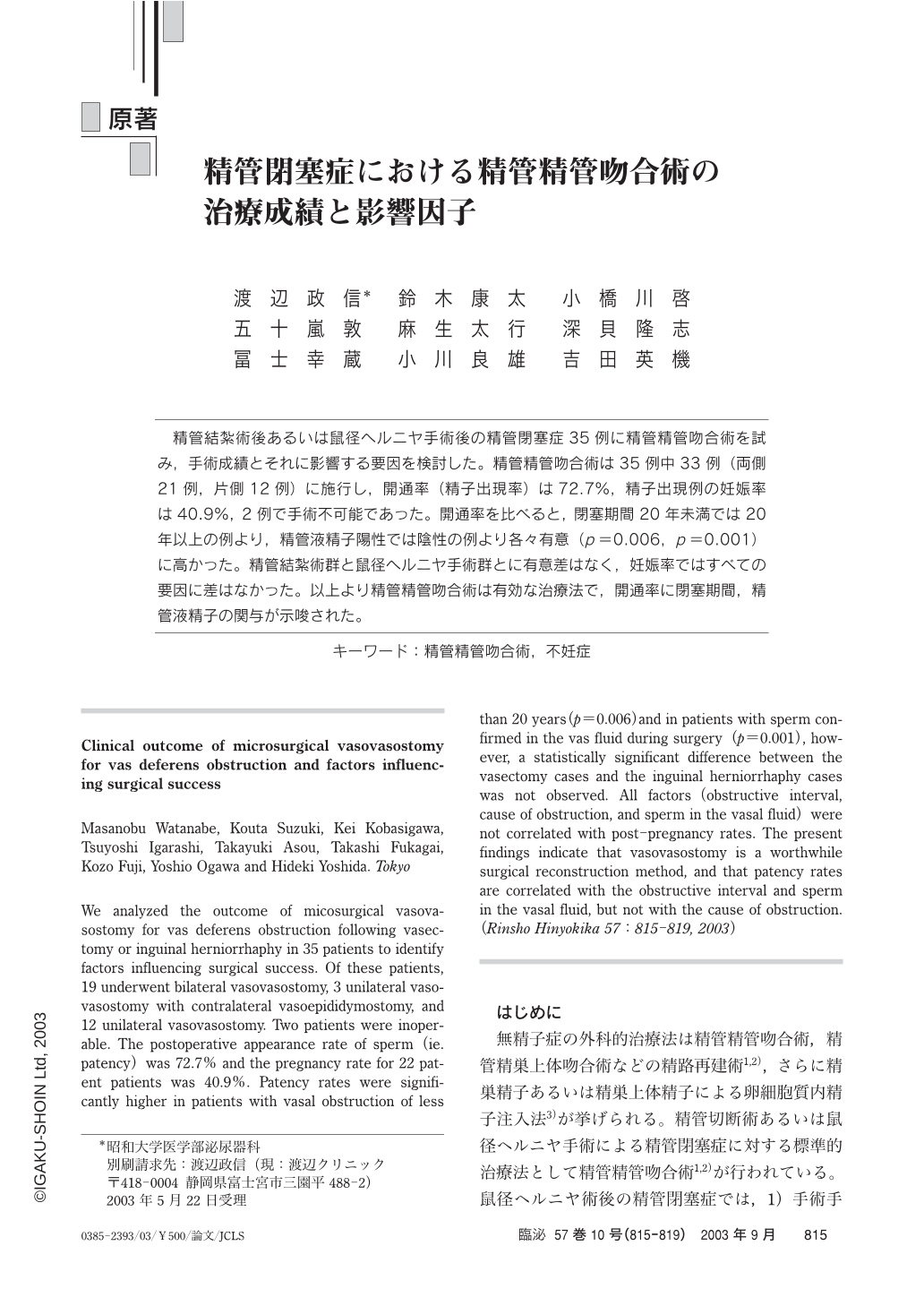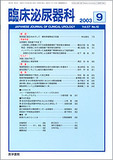Japanese
English
- 有料閲覧
- Abstract 文献概要
- 1ページ目 Look Inside
精管結紮術後あるいは鼠径へルニヤ手術後の精管閉塞症35例に精管精管吻合術を試み,手術成績とそれに影響する要因を検討した。精管精管吻合術は35例中33例(両側21例,片側12例)に施行し,開通率(精子出現率)は72.7%,精子出現例の妊娠率は40.9%,2例で手術不可能であった。開通率を比べると,閉塞期間20年未満では20年以上の例より,精管液精子陽性では陰性の例より各々有意(1p1=0.006,1p1=0.001)に高かった。精管結紮術群と鼠径へルニヤ手術群とに有意差はなく,妊娠率ではすべての要因に差はなかった。以上より精管精管吻合術は有効な治療法で,開通率に閉塞期間,精管液精子の関与が示唆された。
We analyzed the outcome of micosurgical vasovasostomy for vas deferens obstruction following vasectomy or inguinal herniorrhaphy in 35 patients to identify factors influencing surgical success. Of these patients,19 underwent bilateral vasovasostomy,3 unilateral vasovasostomy with contralateral vasoepididymostomy,and 12 unilateral vasovasostomy. Two patients were inoperable. The postoperative appearance rate of sperm(ie. patency)was 72.7%and the pregnancy rate for 22 patent patients was 40.9%. Patency rates were significantly higher in patients with vasal obstruction of less than 20 years(1p1=0.006)and in patients with sperm confirmed in the vas fluid during surgery(1p1=0.001),however,a statistically significant difference between the vasectomy cases and the inguinal herniorrhaphy cases was not observed. All factors(obstructive interval,cause of obstruction,and sperm in the vasal fluid)were not correlated with post-pregnancy rates. The present findings indicate that vasovasostomy is a worthwhile surgical reconstruction method,and that patency rates are correlated with the obstructive interval and sperm in the vasal fluid,but not with the cause of obstruction.

Copyright © 2003, Igaku-Shoin Ltd. All rights reserved.


